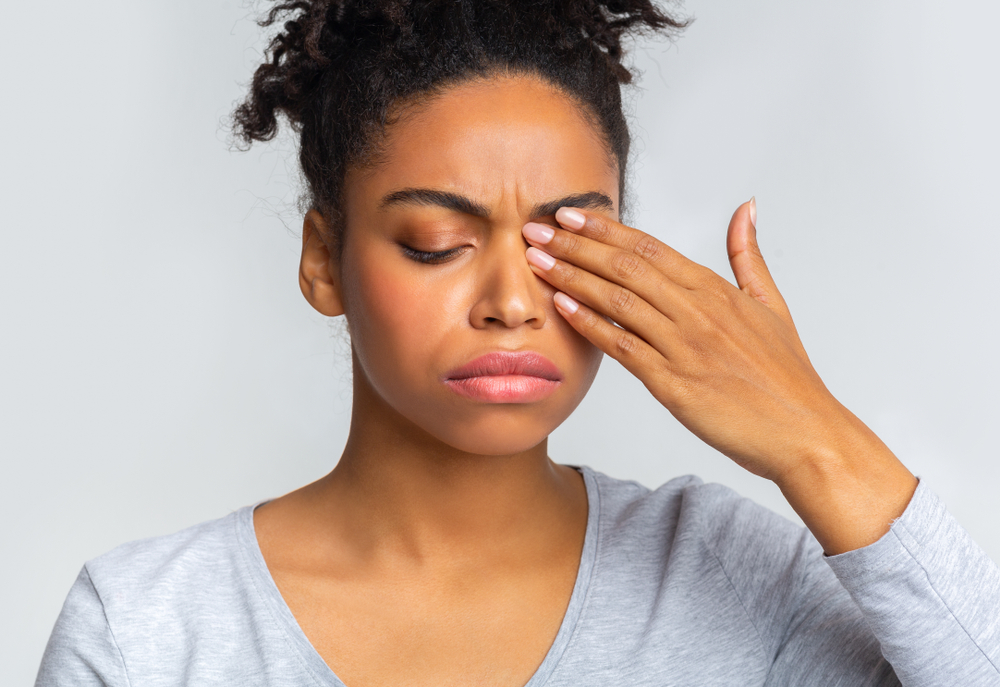Are your eyes stinging, burning, or scratchy? You might be suffering from chronic dry eye. Though common, this condition can cause an array of other uncomfortable symptoms too. And recognizing the warning signs is important because if left untreated, chronic dry eye can lead to severe complications. Fortunately, you can learn everything you need to know about chronic dry eye symptoms with a search online right now!
Stinging, Burning, or Scratchy Sensation
One of the most common symptoms of chronic dry eye is a stinging, burning, or scratchy sensation in the eyes. This discomfort is often described as feeling like there is something in your eye or like your eye is on fire — yikes! You may also experience a sensation of grittiness or sand-like particles in your eye. This symptom can occur intermittently or persistently, and it may be more noticeable in dry or windy conditions or after prolonged reading or computer use.
Sensitivity to Light
Another common symptom of chronic dry eye is sensitivity to light, also known as photophobia. If you have photophobia, you may experience discomfort or pain when exposed to bright lights, sunlight, or fluorescent lighting. This sensitivity can cause squinting and aching around the eyes. Some people with photophobia also experience headaches or migraines as a result of light sensitivity.
Eye Redness or Irritation
Eye redness or irritation is another common symptom of chronic dry eye. This symptom occurs when the blood vessels in the eye become inflamed, causing the eye to appear red and feel sore or irritated. Eye redness and irritation can be caused by a variety of factors, including dry or windy conditions, allergies, and environmental irritants. In some cases, eye redness and irritation can be a sign of a more severe underlying condition, such as an infection or inflammation.
Watery Eyes
Contrary to what one might expect, watery eyes are also a common symptom of chronic dry eye. When your eyes aren’t producing enough tears, your body may respond by producing more reflex tears to try and lubricate your eyes. However, reflex tears are not the same as natural tears and can cause the eyes to appear watery. If you have chronic dry eye, you may experience both dryness and excessive tearing, which can be frustrating and uncomfortable.
Eye Fatigue
Eye fatigue is another symptom that can be associated with chronic dry eye. This symptom occurs when the eyes become tired or strained, usually after prolonged periods of reading, computer use, or driving. Eye fatigue can cause discomfort, such as soreness or aching around the eyes, and can also lead to headaches or difficulty focusing. In some cases, eye fatigue can be a sign of underlying vision problems or other eye conditions, so it’s essential to contact your eye doctor if you experience this symptom.
Other Possible Symptoms of Dry Eye
In addition to the symptoms discussed above, there are other possible symptoms of chronic dry eye that you should be aware of. These can include a sensation of grittiness or foreign body in the eyes, blurred vision, and difficulty wearing contact lenses. These symptoms can be caused by a variety of factors, such as aging, hormonal changes, certain medications, or underlying medical conditions. Contact your eye doctor if you experience any of these symptoms.
Don’t Suffer: How Treatment Can Help
If you’re experiencing chronic dry eye symptoms, take heart—effective treatments are available to provide relief and improve your quality of life. Simple remedies like using artificial tears can bring immediate comfort. Additionally, lifestyle adjustments, such as blinking exercises and staying hydrated, can make a significant difference. However, don’t stop there—many advanced treatments exist, like prescription eye drops and specialized therapies. It’s essential to explore your options online, but consulting an eye specialist is the best way to discover the personalized approach that suits your unique needs. Remember, you don’t have to endure discomfort; relief is within reach!
Learn More About Chronic Dry Eyes Today
You might feel like there’s no relief in sight but finding the right treatment simply takes a bit of research! Empower yourself with knowledge about chronic dry eyes by starting your research now. Understanding the causes, symptoms, and available treatments can help you take control of your eye health.
Be sure to visit reputable websites, medical resources, and patient forums to gather valuable insights from others who have experienced similar issues. Educating yourself about chronic dry eyes is the first step towards finding relief and improving your well-being. Don’t hesitate—begin your search today and discover the information that can make a positive impact on your life.



